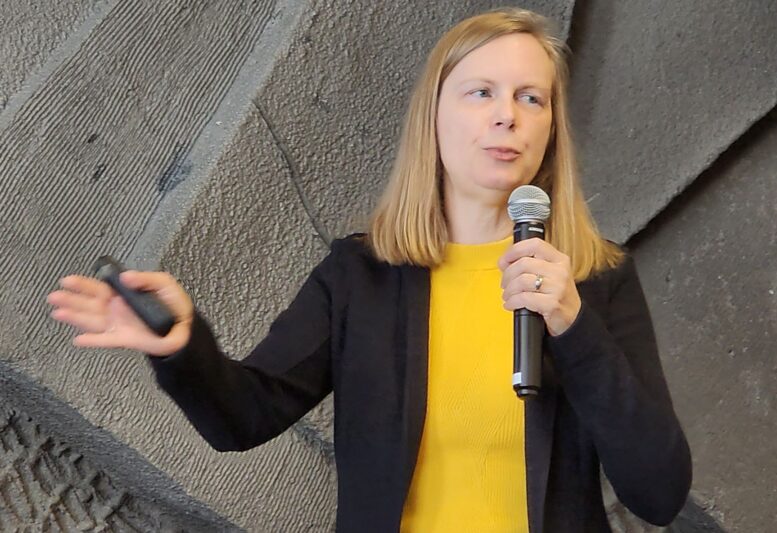By JAN McLAUGHLIN
BG Independent News
Americans are saying “I do” and “I don’t anymore” later in life.
Dr. Susan Brown, a sociology professor at Bowling Green State University, shared some marriage and divorce patterns showing up in the U.S. with the Bowling Green Kiwanis Club on Thursday.
A demographer and population scientist, Brown loves numbers and the patterns they bring to light. She tackled marriage trends first.
“What’s wrong with people? Why aren’t they getting married?” Brown asked.
Nearly one-quarter of Americans reach age 40 without having wed, she said.
“Americans are delaying and forgoing marriage.”
Charted over the past century, first marriages ebbed and flowed a bit until the 1970s.
“Then they started to plummet,” Brown said.
“The ‘Leave it to Beaver’ heydays were over,” she said. Statistics showed a dramatic decrease in the number of people getting married in their 20s.
Back in 1987, Newsweek magazine made the surprising statement that people who had not married by age 40 had a better chance of being the victim of a terrorist attack than getting hitched, Brown said.
The magazine might have been a bit hasty in reaching that conclusion.
The most recent numbers show that the average age for first marriages has reached an historic high. For men it’s 30.4 years, and for women it’s 28.6 years.
Younger people don’t feel marriage is as important, Brown said.
“You don’t need to have a partner. There’s not the social pressure to marry anymore,” she said.
But while some parents may fret about their unmarried offspring, moms and dads shouldn’t give up, according to Brown.
Maybe studies of marriage just need to be expanded – rather than presuming that if someone isn’t wed by 40 that their chances at getting hitched are hopeless, she said.
“We follow you to about 40,” Brown said of demographers collecting data on marriage. “It used to be if you’re over 40, you’re out of the game.”
But marriage delayed does not necessarily lead to marriage foregone.
Brown suggested that the lens be widened to include people in their 40s and 50s – many who get married mid-life. Since 1990, the number of women in their 40s and 50s entering their first marriage jumped by 75%.
“We’re missing a lot of action here,” by cutting off marriage data collection at age 40, she said.
At the same time Americans are postponing marriage, they are also divorcing later in life. The divorce rate among younger couples has dropped, while couples 50 years and older are splitting up in increasing numbers.
Back in 1990, approximately 10% of divorces in America involved people 50 and older. By 2021, approximately 40% of splits were “gray divorces.” And 10% of those “gray divorces” involved people 65 and older – many who had been in long-term marriages.
“This challenges our stereotypes,” Brown said.
This trend may be partially attributed to the fact that while gray divorces leave ex-spouses less time to recoup their financial losses, it’s a sign of more economic stability and independence among women.
Gray divorces may also reflect the greater longevity of life. Americans who make it to age 65, are more likely than in the past to live another 20 years.
“It’s a long time to spend with someone they don’t like much anymore,” Brown said.
This trend also leads Brown to think that family demographic studies need to take a wider view.
“There are some very intriguing changes taking place for families in their later lives,” she said. “We need to widen the lens to encompass family changes in the second half of life.”
Brown also addressed the rates of unmarried couples living together.
Cohabitation numbers have jumped, among young people before marriage and among older people after divorce.
Data is also showing that older adults who have divorced are entering “LAT” relationships, meaning they are “living apart together.” The flexibility of the relationships are attractive to many older adults, Brown said.





